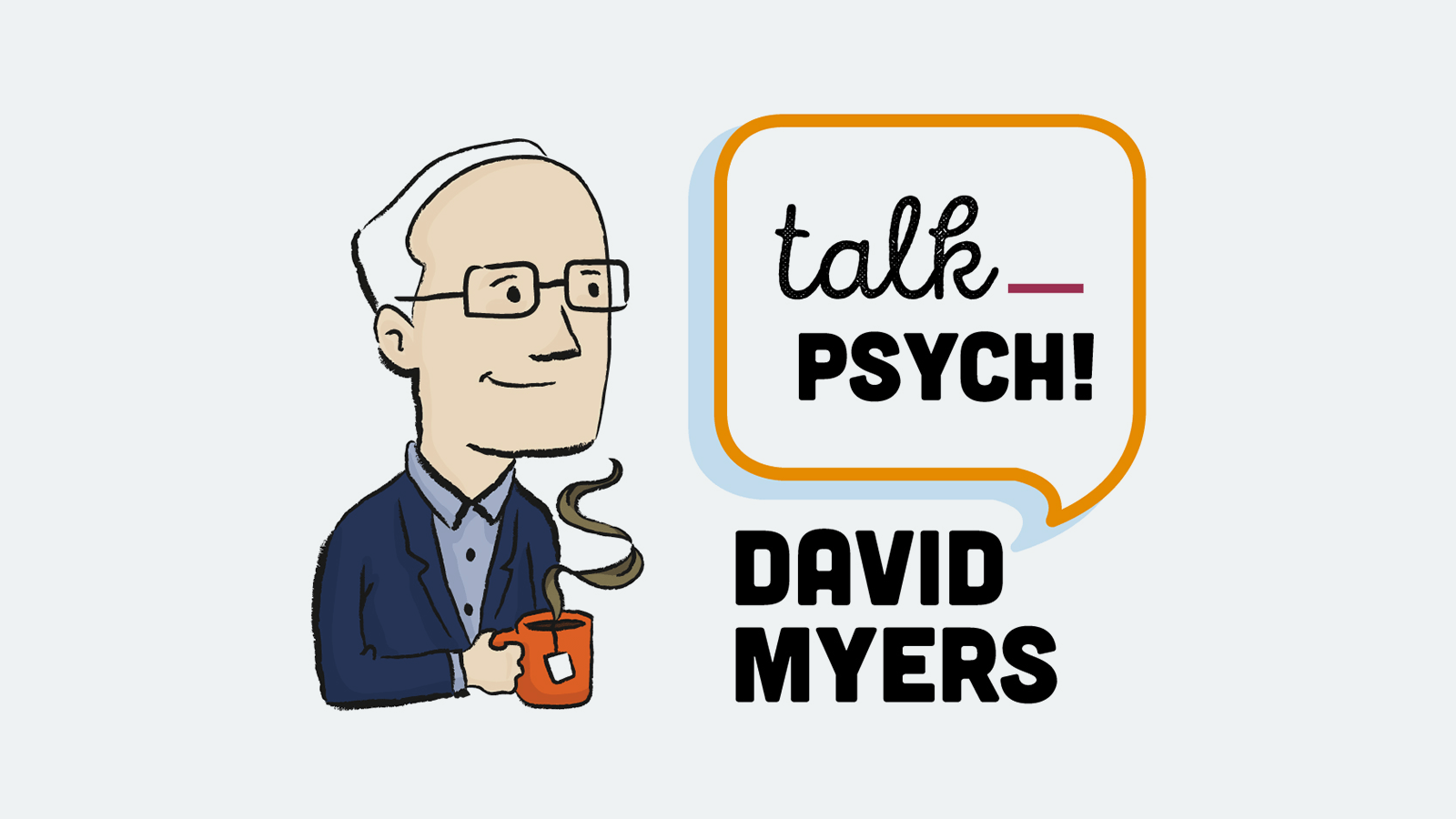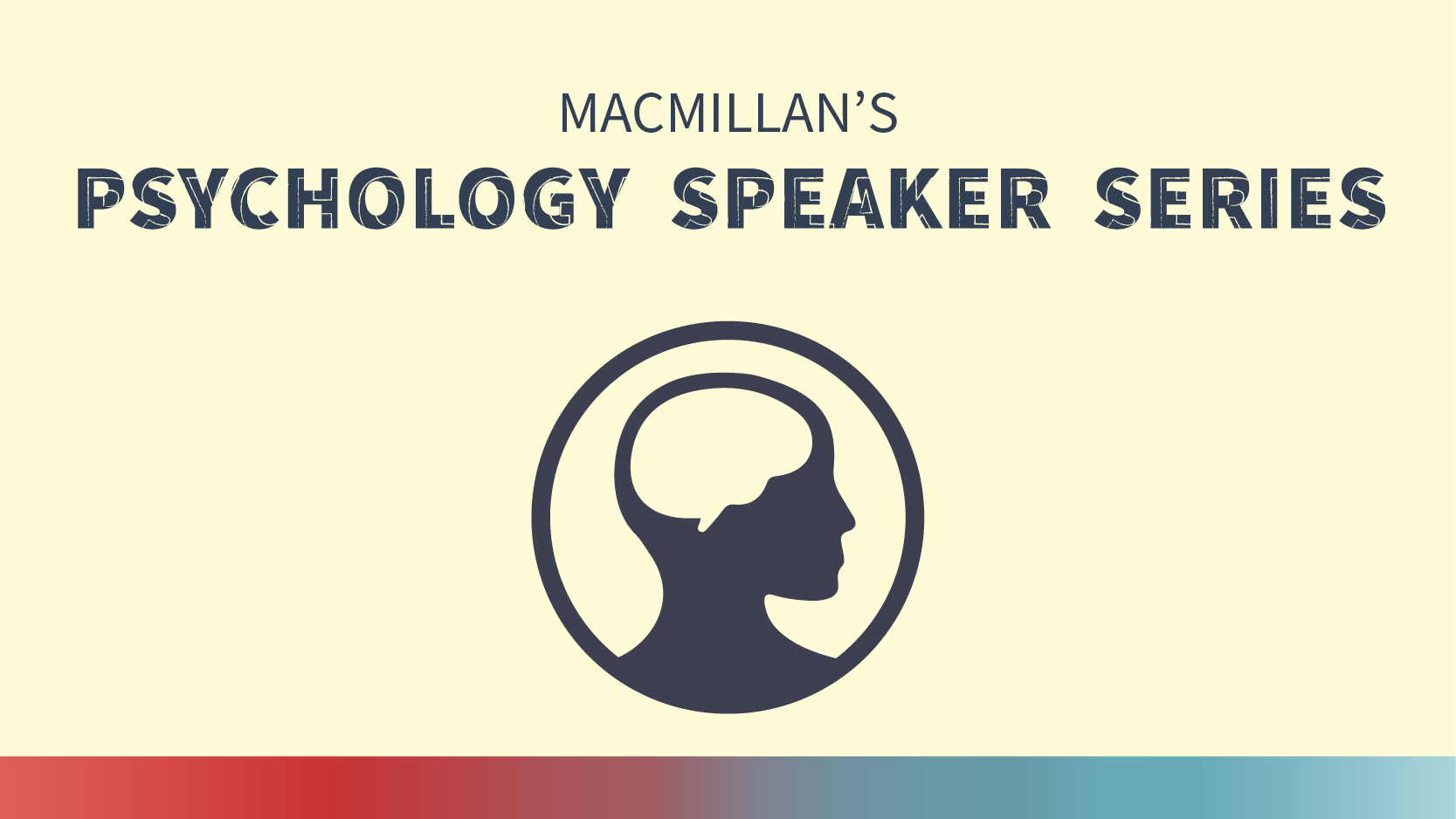-
About
Our Story
back- Our Mission
- Our Leadershio
- Accessibility
- Careers
- Diversity, Equity, Inclusion
- Learning Science
- Sustainability
Our Solutions
back
-
Community
Community
back- Newsroom
- Discussions
- Webinars on Demand
- Digital Community
- The Institute at Macmillan Learning
- English Community
- Psychology Community
- History Community
- Communication Community
- College Success Community
- Economics Community
- Institutional Solutions Community
- Nutrition Community
- Lab Solutions Community
- STEM Community
- Newsroom
- Macmillan Community
- :
- Psychology Community
- :
- Psychology Blog
- :
- Psychology Blog - Page 18
Psychology Blog - Page 18
Options
- Mark all as New
- Mark all as Read
- Float this item to the top
- Subscribe
- Bookmark
- Subscribe to RSS Feed
Psychology Blog - Page 18
Expert
03-09-2020
09:32 AM
Timely piece from the World Economic Forum on pandemics and the psychology of uncertainty: http://ow.ly/4YWx30qosuI #psychstudentrss
... View more
0
0
2,001
Expert
03-04-2020
07:51 AM
Have you ever tried an online dating app? Read about some trends here: Making Sense of Online Dating in 2020 | Psychology Today http://ow.ly/EqNQ30qn0e0 #psychstudentrss
... View more
0
0
1,344
Expert
03-02-2020
01:23 PM
Photographer Noah Kalina took a photo of himself every day for 20 years. He put them all together into an 8-minute video. When he started this project on January 11, 2000, he was 19.5 years old. When this video ends on January 11, 2020, he was 39.5 years old. That’s 240 months in 480 seconds—one month every two seconds. If you play it at double speed, it will only take four minutes to show—one month every second. Once the recording starts to play, click the gear icon in the bottom right corner of the recording to change your playback speed. Video Link : 2563 I have been thinking about this video since I first saw it. We watch people age all the time, but to watch it happen so quickly is… I’m not sure what. Jarring? Compelling? Both? This video could be a nice lead-in to your coverage of adulthood. Encourage your students to jot down their reactions as they watch. Afterwards, invite students to share their reactions in pairs/small groups or with the class as a whole. Kalina was born in early July, 1980. The first photo we have of him is in early January, 2000. As a rough starting point (within a few weeks), Kalina is about 19.5 years old in the first photo. In the development chapter, as you move from emerging adulthood to middle adulthood, use these video times to jump ahead in the recording. Approximate Age Video Time 19.5 0:00:02 20 0:00:14 21 0:00:38 22 0:01:02 23 0:01:26 24 0:01:50 25 0:02:14 26 0:02:38 27 0:03:02 28 0:03:26 29 0:03:50 30 0:04:14 31 0:04:38 32 0:05:02 33 0:05:26 34 0:05:50 35 0:06:14 36 0:06:38 37 0:07:02 38 0:07:26 39 0:07:50 39.5 0:08:02 Kalina has also compiled the photos into a collage. It’s difficult to see individual photos, but taken in its entirety, it’s just as compelling as the recording.
... View more
Labels
0
0
2,169
Expert
02-26-2020
07:20 AM
Well now this could be interesting. A New Netflix Show Will Tackle Life as a Department Chair. Academics Have Thoughts. - The Chronicle of Higher Education http://ow.ly/5z3n30qkUV8 #psychstudentrss
... View more
0
0
1,894
Expert
02-23-2020
07:50 AM
Many cartoonists are excellent observers of the human condition. One of the best is Charles Schulz of Peanuts fame. With 50 years of comic strips, that’s 17,897 individual strips—drawn by him and him alone—Schulz’s characters can be a rich source of psychology examples. In this strip that ran most recently on May 5, 2019, Schulz gifts us with a beautiful example of classical conditioning. Students don’t need to be familiar with the characters to see the classical conditioning. If they are familiar with Charlie Brown and Lucy and the relationship these characters have with each other, they’ll better appreciate the humor. The characters are playing baseball. From the outfield, Lucy yells, “Hey, manager!” Charlie Brown, standing on the pitcher’s mound, looks at us with a queasy expression. He explains that hearing her say “Hey, manager!” is enough to give him a stomachache because every time she yells that, she follows it up with a stupid/dumb/sarcastic remark. In this particular case, she surprises him (and long-time Peanuts readers) by saying something else. In the last panel, though, Lucy reveals that she knows exactly what’s going on. I ask my students these questions about the strip: In this example, identify the unconditioned stimulus, unconditioned response, conditioned stimulus, and conditioned response. Use this example to explain generalization and discrimination. What would need to happen in order to bring about extinction? What would spontaneous recovery look like? While I do this as part of a larger homework assignment, it also works as an in-class discussion topic or as a lecture example. Through this example, I have learned that many of my students are not familiar with the Peanuts comic strip. I know who is and who is not familiar based on what they call Charlie Brown. Students who know it call him Charlie Brown. Students who don’t know it simply call him Charlie—which is jarring to my 52-year-old, US-born ears.
... View more
Labels
0
0
4,666
Expert
02-18-2020
01:01 PM
In the Intro Psych sensation and perception chapter, we often cover monocular cues. While it’s fine to think about how monocular cues help us perceive depth, I had never given much thought to what we would perceive if we lacked several monocular cues. In Your Inner Fish, the author, paleontologist and anatomy professor Neil Shubin, writes There is no field manual for Arctic paleontology. We received gear recommendations from friends and colleagues, and we read books-only to realize that nothing could prepare us for the experience itself. At no time is this more sharply felt than when the helicopter drops one off for the first time in some godforsaken part of the Arctic totally alone. The first thought is of polar bears. I can't tell you how many times I've scanned the landscape looking for white specks that move. This anxiety can make you see things. In our first week in the Arctic, one of the crew saw a moving white speck. It looked like a polar bear about a quarter mile away. We scrambled like Keystone Kops for our guns, flares, and whistles until we discovered that our bear was a white Arctic hare two hundred feet away. With no trees or houses by which to judge distance, you lose perspective in the Arctic (pg. 17). This photo of Arctic Alaska can help you picture what Shubin and his colleagues were seeing—or not seeing. The caption says that those dark dots are caribou. Looking at this tundra is not unlike looking at the sky, and the sky also frequently lacks monocular cues. When I see a speck with the sky as the background, if I perceive that speck as really close, then it’s a gnat. If I perceive it a little farther away, it’s a bird. If I perceive it really far away, it’s a plane. If I perceive the speck as being someplace between the bird and the plane, it’s Superman. In Shubin’s case, the Arctic tundra didn’t give him many monocular cues to work with. Without a solid sense of distance, it’s difficult to determine the size of the object or critter. After covering monocular cues, share with students the Arctic Alaska photo. Drag your browser so the description of the caribou is off the screen. Ask students to identify the dots in the photo. After all of the guesses are in, tell students that the dots are caribou. Ask students which of the monocular cues you covered can be seen in the photo, such as relative height. Ask students which ones are missing, such as linear perspective. The fewer distance cues we have, the harder it is to determine distance. To close the activity, read students Shubin’s hare/bear paragraph. That will give you a leaping off point to talk about the ways in which our expectations can affect our perceptions. Shubin and his colleagues could have perceived the critter as a hare from the very beginning, but because polar bears were very much on their minds, a polar bear is what they all perceived. That is, until further evidence proved them wrong.
... View more
Labels
0
0
2,012
Expert
02-18-2020
11:00 AM
Have you ever wondered if social media makes relationships harder? If so, read this! How Social Media Might Undermine Romantic Relationships | SPSP http://ow.ly/95cI30qiLMC #psychstudentrss
... View more
0
0
1,696
Expert
02-15-2020
01:36 PM
Ingroups can be pretty powerful. We tend to like people in our ingroups more than people in our outgroups (ingroup bias), and we tend to see people in our outgroups as being more like each other than people in our ingroups (outgroup homogeneity bias), for example. There is much rhetoric about Democrats vs. Republicans, immigrants/refugees vs. native born, the wealthy vs. the middle class vs. the working poor, people with homes vs. people who are homeless. Depending on where you live, the groups may be different than these, but the groups are there. The next time you cover ingroups/outgroups, ask your students what groups are most salient to them – on your campus or in your town/city. If you’re in a small college town, it may be the townies vs. those at the college. Write down the names of the groups where students can see them. If time allows, ask your students to work in pairs or small groups to generate examples of how ingroup bias or outgroup homogeneity bias has affected or could affect how each group sees themselves and sees the other. Next, show this 3-minute TV2 Denmark ad that aired in 2017. Video Link : 2526 Ask students to share their reactions to the video. If they could get their-previously-identified groups together, what questions would they ask? Who likes pizza? Who likes dogs? Who likes cats? Who likes to drive? Close this activity by pointing out ingroups/outgroups shift depending on context. When one context—politics, for example—is continually salient, it’s easy to forget that we have plenty in common with members of our—say, political—outgroup. What strategies might your students use to help them remember that they may have a lot in common with an outgroup member, and to remember that, in a different context, that person is probably a member of their ingroup?
... View more
Labels
0
0
2,298
Expert
02-12-2020
10:45 AM
Feeling the Valentine's Day love? People Who Think Their Partners Are a Perfect Fit Stay Happier—Even if They’re Wrong – Association for Psychological Science – APS http://ow.ly/3SFa30qhciv #psychstudentrss
... View more
0
0
1,849
Expert
02-10-2020
09:23 AM
Has your university seen changes in the curriculum or in classroom behavior in the last few years? Read about one school in Texas that is facing widespread problems: When the Culture War Comes to the Classroom via @chronicle #psychstudentrss
... View more
0
0
1,807
Expert
02-04-2020
04:00 AM
If you are about to cover or have recently covered the availability heuristic in Intro Psych, ask your students this question. Which are you more concerned about: the coronavirus or the flu virus? Alternatively, How concerned are you about the coronavirus? (1 not at all concerned to 7 very concerned) How concerned are you about the flu virus? (1 not at all concerned to 7 very concerned) Here are the statistics. Coronavirus As of Monday, February 3, 2020, CBS News reports that “there were more than 20,000 confirmed cases [of coronavirus infection] in more than two dozen countries, the vast majority of them in China, according to the World Health Organization. There have been at least 425 deaths in China, and one in the Philippines.” Flu virus In contrast, in the United States alone, the Centers for Disease Control and Prevention (CDC) reports as of January 25, 2020 that 19 million to 26 million people have contracted the flu resulting in 180,000 to 310,000 hospitalizations and 10,000 to 25,000 deaths. This year isn’t so bad. The CDC estimates that the flu virus killed 61,000 people during the 2017-2018 flu season, again, just in the United States. If your students are using the availability heuristic here, they are much more likely to be concerned about the coronavirus than the flu virus. The coverage of the coronavirus in mass media and social media is, well, substantial. The coverage of the flu virus is almost nil. This is an excellent opportunity to talk with students about how the information we take in can influence how we see the world, a perception that can cause us to put our fears in the wrong place. Ask students to take a few minutes to generate some strategies for increasing their own awareness of when they may be under the influence of the availability heuristic as well as some strategies for countering it. It may be as simple as realizing that we’re feeling frightened and saying, “Wait. Do I have reason to be frightened? Let me do some research into this.” Of course, this does not mean that your students should be freaked out by the flu instead. Encourage your students to do some research on who is most at risk for dying from the flu. For those who aren’t at risk from dying from the flu, getting the flu vaccine can help prevent them from passing the flu on to someone else who is at risk from dying from it.
... View more
Labels
1
0
3,470
Expert
01-28-2020
10:10 AM
Ever wonder what a mummy would sound like? No? Well here's your chance to find out anyway! 3-D Printing Gives Voice to a 3,000-Year-Old Mummy - Scientific American http://ow.ly/wpnf30qd35U #psychstudentrss
... View more
0
0
1,844
Expert
01-27-2020
07:09 AM
More new research on the questionable link between electronic use and social problems in children. What do you think? Panicking About Your Kids’ Phones? New Research Says Don’t - The New York Times http://ow.ly/gORu30qcFEG #psychstudentrss
... View more
0
0
1,361
Expert
01-22-2020
12:27 PM
Excellent (and timely!) review of note-taking strategies at the start of a new semester: Note Taking: A Research Roundup https://www.cultofpedagogy.com/note-taking/ #psychstudentrss
... View more
0
0
2,180
Expert
01-16-2020
10:35 AM
Some people are more susceptible to the placebo effect than others; it turns out your DNA might be responsible! Your DNA Could Determine How Easily You're Fooled by Placebos http://ow.ly/TNoe30q9Ibn #psychstudentrss
... View more
1
0
2,088
Topics
-
Abnormal Psychology
16 -
Achievement
3 -
Affiliation
2 -
Behavior Genetics
2 -
Cognition
33 -
Consciousness
32 -
Current Events
26 -
Development Psychology
18 -
Developmental Psychology
30 -
Drugs
5 -
Emotion
55 -
Evolution
3 -
Evolutionary Psychology
4 -
Gender
17 -
Gender and Sexuality
7 -
Genetics
10 -
History and System of Psychology
6 -
History and Systems of Psychology
5 -
Industrial and Organizational Psychology
47 -
Intelligence
6 -
Learning
63 -
Memory
37 -
Motivation
13 -
Motivation: Hunger
2 -
Nature-Nurture
5 -
Neuroscience
45 -
Personality
29 -
Psychological Disorders and Their Treatment
21 -
Research Methods and Statistics
98 -
Sensation and Perception
43 -
Social Psychology
121 -
Stress and Health
51 -
Teaching and Learning Best Practices
54 -
Thinking and Language
18 -
Virtual Learning
25
- « Previous
- Next »
Popular Posts








